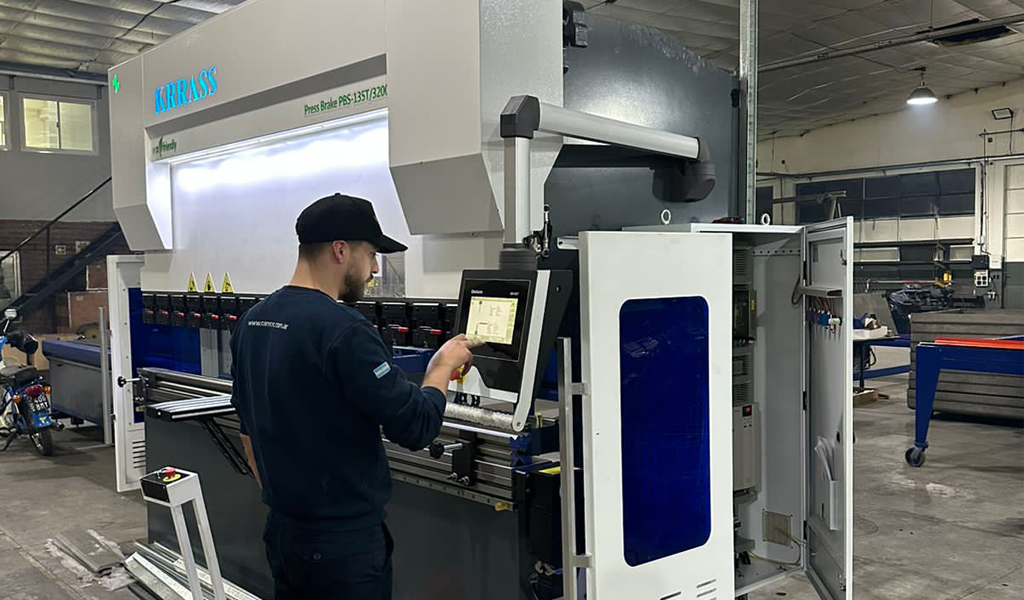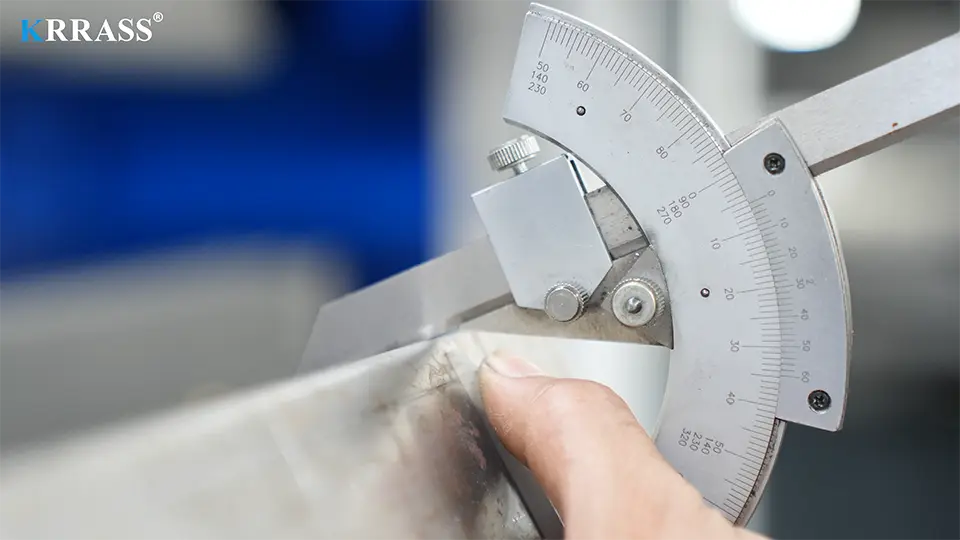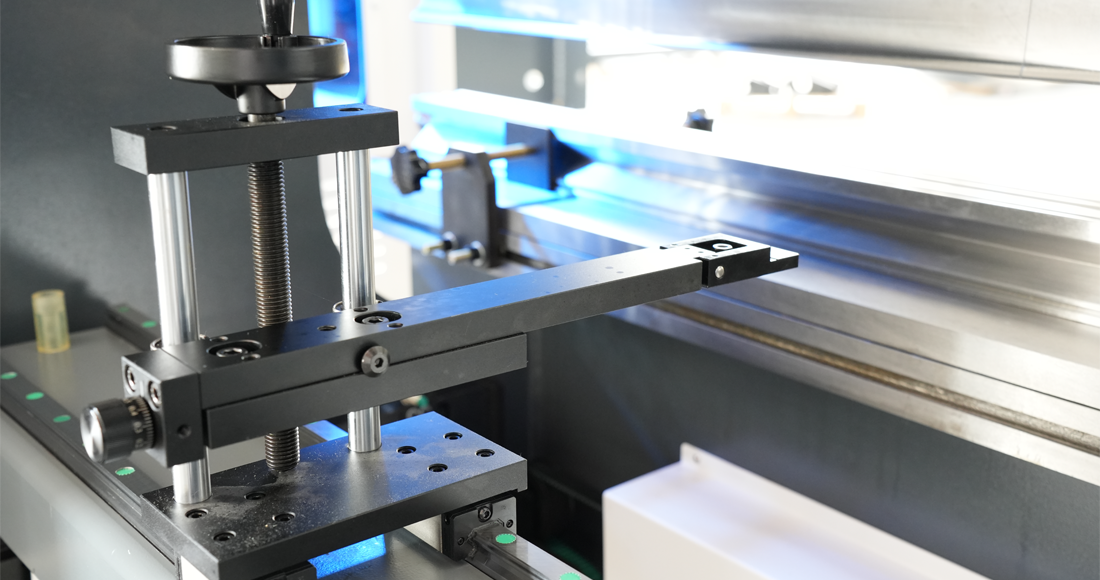Welcome to the comprehensive world of Press Brakes – a key player in the metal fabrication industry. This guide is crafted to unfold every aspect of Press Brakes, from their types and components to their operation, safety procedures, and advanced bending techniques. Whether you're a seasoned professional or new to the realm of metal forming, our insights will help you harness the full potential of Press Brakes for unparalleled precision and efficiency in your projects.
1.What is Press Brake
When it comes to shaping and bending metal, the Press Brake is an indispensable tool in the manufacturing industry. This powerful machine, essential for metal fabricators, is designed for precision and versatility, offering unparalleled efficiency in metal forming operations. At its core, a Press Brake is a machine that allows for the bending of sheet metal. This is achieved through the application of significant pressure on the metal, which is placed between a punch and a die.
The true essence of a Press Brake lies in its precision. With advancements in technology, modern Press Brakes are not just about brute force; they bring in an element of finesse and accuracy. This makes them ideal for a wide range of applications, from simple bends to complex shapes. The versatility of a Press Brake is evident in its various types and configurations, each tailored to specific bending needs. Whether it’s a manual Press Brake for smaller, more straightforward tasks or a CNC (Computer Numerical Control) Press Brake for intricate and precise bends, the right machine can significantly elevate the quality and efficiency of metal forming processes.
Understanding the capabilities of a Press Brake is crucial for anyone in the metalworking field. Its ability to create sharp, accurate bends at various angles makes it a go-to solution for complex fabrication projects. The Press Brake's role extends beyond mere bending; it is about shaping the metal to meet specific design requirements, ensuring that each bend contributes to the structural integrity and aesthetic appeal of the final product.
2.Types of Press Brake
The versatility of Press Brakes stems from the various types available, each designed to meet specific bending needs in the metal fabrication industry. Understanding these types is essential for selecting the right Press Brake for your projects, ensuring efficiency and precision in your work.
Manual Press Brakes: Ideal for smaller workshops or less complex tasks, manual Press Brakes are operated by hand. They are a cost-effective solution for simple bending tasks, offering straightforward operation without the need for advanced programming. Despite their simplicity, they require skilled operators to achieve accurate results.
Hydraulic Press Brakes: Known for their power and reliability, hydraulic Press Brakes use hydraulic cylinders to apply pressure. They are suitable for a wide range of materials and thicknesses, offering consistent bending force and precision. These machines are a popular choice for medium to large-scale operations.
CNC Press Brakes: At the forefront of technology, CNC Press Brakes bring automation and precision to metal bending. With computer numerical control, they allow for highly accurate, repeatable bends, making them ideal for complex and intricate designs. Their programmable features and automated setup reduce the chances of human error and increase efficiency.
Electric Press Brakes: These are the latest innovation in the world of Press Brakes. Electric Press Brakes are known for their energy efficiency, precision, and speed. They are environmentally friendly, have a lower operating cost, and are ideal for high-precision work, especially in industries where precision is paramount.

3.Components of Press Brakes
A deep understanding of the components of Press Brakes is crucial for anyone looking to maximize their efficiency and precision in metal fabrication. Each component plays a specific role, and together, they form the backbone of this indispensable tool. Let’s break down the key components of a Press Brake.
The Bed: The bed is the base of the Press Brake, serving as a foundation for other components. It needs to be robust and stable to handle the heavy loads and the stress of bending operations.
The Ram: The ram, moving vertically, delivers the force required to bend the metal. In hydraulic Press Brakes, this movement is driven by hydraulic cylinders, whereas in mechanical Press Brakes, a motor-driven flywheel powers it.
The Back Gauge: An essential component for precision, the back gauge moves horizontally and is used to accurately position the metal sheet. This ensures precise bending angles and consistent repeatability in the bending process.
The Die and Punch: These are the tools that actually shape the metal. The die is positioned on the bed of the Press Brake, and the metal sheet is placed over it. The punch, attached to the ram, comes down and forces the metal into the die to create the bend.
Control Panel: Especially prominent in CNC Press Brakes, the control panel is the user interface for programming the machine. It allows the operator to set parameters like the bending angle, force, and back gauge positioning, ensuring precise and efficient operation.
4.How Press Brakes Work
Understanding how Press Brakes work is key to mastering their use in metal fabrication. The process combines mechanical force with precision engineering, resulting in the efficient shaping of metal sheets. Let's delve into the operational mechanics of a Press Brake.
At its core, the operation of a Press Brake involves two main actions: the positioning of the metal sheet and the bending process. The metal sheet is first placed on the die, which sits on the bed of the Press Brake. The back gauge is used to position the sheet accurately, ensuring that the bend is made at the correct location.
Once the sheet is in place, the ram, carrying the punch, descends onto the metal. The punch presses the sheet into the die, creating the bend. The depth to which the punch descends determines the angle of the bend. This is where precision control comes into play, especially in CNC Press Brakes, where the exact depth and force of the ram are meticulously programmed.
In hydraulic Press Brakes, hydraulic cylinders power the movement of the ram. This allows for the exertion of substantial force, making it suitable for thicker and harder materials. Meanwhile, in manual and electric Press Brakes, the force applied varies based on the design and purpose of the machine.
The entire process requires a synergy between the machine’s components and the operator’s skill. For complex shapes and precise bends, CNC Press Brakes offer a higher level of control and repeatability. The precision and efficiency of the Press Brake's operation are not just about bending metal; they are about transforming it with accuracy and finesse to meet specific design requirements.

5.Press Brake Metal Forming Tips
Achieving precision and efficiency in metal forming with a Press Brake requires not just understanding its operation, but also mastering certain techniques and tips. Here, we’ll share some essential metal forming tips to help you get the most out of your Press Brake.
Material Preparation: Before starting the bending process, ensure that the metal sheets are properly prepared. This includes cleaning the material and checking for any imperfections. Proper preparation can significantly impact the quality of the bend.
Tool Selection: Choosing the right tools, including the punch and die, is critical. The tooling must be compatible with the thickness and type of metal you are working with. The correct tooling ensures not only the accuracy of the bend but also the longevity of the machine.
Correct Settings: For CNC Press Brakes, ensure that all the settings, such as the bending angle, force, and back gauge position, are correctly programmed. Accurate settings are vital for achieving precise bends and consistency in your work.
Consistent Pressure: Apply consistent pressure during the bending process. Inconsistent pressure can lead to irregular bends or damage to the metal. This is especially important for thicker and harder materials.
Regular Maintenance: Regular maintenance of your Press Brake is crucial. This includes checking for wear and tear on tools, ensuring hydraulic systems are functioning correctly, and keeping the machine clean. Well-maintained equipment performs better and lasts longer.
Operator Training: Ensure that operators are well-trained and understand the capabilities and limitations of the Press Brake. Skilled operators can significantly improve the quality of the work and the efficiency of the operations.
6.Operation and Safety Procedures
How to Use Press Brake
Proper operation of a Press Brake is key to achieving precision in metal fabrication. Here’s a step-by-step guide to using a Press Brake:
- Preparation: Begin by preparing the Press Brake and the metal sheet. Ensure that the machine is clean, and the metal sheet is free of dirt and oils.
- Tool Selection: Choose the appropriate punch and die based on the material and the required bend.
- Machine Setup: Install the selected tools and set up the back gauge according to the bending requirements.
- Programming: For CNC Press Brakes, input the necessary parameters such as bend angle, force, and back gauge position into the control panel.
- Bending Process: Place the metal sheet on the die, align it with the back gauge, and activate the Press Brake to make the bend.
- Inspection: After bending, inspect the piece to ensure it meets the desired specifications.
Safety Tips
Safety is paramount when operating a Press Brake. Here are essential safety tips to follow:
- Personal Protective Equipment: Always wear appropriate safety gear, including gloves and eye protection.
- Machine Check: Regularly inspect the Press Brake for any signs of wear or damage.
- Clear Workspace: Keep the area around the Press Brake clear to avoid accidents.
- Understand the Controls: Be thoroughly familiar with the machine's controls and emergency stop mechanisms.
- Training: Ensure that all operators are adequately trained and understand the safety procedures.
- Avoid Distractions: Stay focused while operating the machine to prevent accidents.
7.Press Brake Bending Techniques
Air Bending
Air Bending is one of the most common techniques used with Press Brakes. This method involves placing the metal sheet on the die and lowering the punch just enough to make contact but not fully pressing it into the die. This technique is preferred for its flexibility, allowing for a range of bend angles with minimal tool changes. Air bending requires less force than other methods, making it efficient for thinner materials.
Bottom Bending
Bottom Bending is a technique where the punch presses the metal sheet into the die until it conforms completely to the die angle. This method provides more control over the bend angle and is often used for precise, acute bends. It requires more force than air bending and is ideal for achieving consistent angles in the production of parts.
Coining
Coining involves applying extreme pressure to the metal sheet, forcing it to conform to the shape of the die and punch. This method is highly precise and produces consistent bends with a high degree of accuracy. Coining is particularly useful for thick materials and applications requiring sharp, clean bends. However, it requires greater force and a more robust machine setup than air or bottom bending.

8.Troubleshooting Common Issues
Operating a Press Brake can sometimes present challenges. Understanding how to troubleshoot common issues is crucial for maintaining productivity and ensuring the longevity of the machine. Let’s explore some typical problems and their solutions.
Inconsistent Bending: If you notice that your bends are not consistent, the problem could be with the machine setup. Check the alignment of the punch and die, and ensure that the back gauge is correctly positioned. For CNC Press Brakes, verify that the programming is accurate.
Tool Wear: Over time, the tools can wear down, affecting the quality of the bends. Regular inspection and timely replacement of worn-out tools are essential. Using the correct tooling for your material and thickness also helps in reducing wear.
Material Springback: Springback is when the material tries to return to its original shape after bending. This can be mitigated by adjusting the bend angle and pressure or by choosing a different tooling setup. For materials prone to springback, consider factors like material grade and thickness in your calculations.
Hydraulic Issues: In hydraulic Press Brakes, issues such as leaks or pressure loss can occur. Regular maintenance, including checking hydraulic fluid levels and inspecting for leaks, is critical. Also, ensure that the hydraulic system is regularly serviced by a professional.
Control System Errors: For CNC Press Brakes, software glitches or control system errors can disrupt operations. Regular software updates, routine system checks, and proper training on the control system can help prevent these issues.
9.Correct Use and Selection of Press Brake Tools
The efficiency and precision of a Press Brake largely depend on the correct use and selection of tools. Choosing the right tools and using them appropriately is crucial for achieving desired bending results and prolonging the life of the machine. Let's explore how to select and use these tools effectively.
Tool Selection: The choice of tools depends on several factors, including the type of material, thickness, and the desired bend radius. Tools are specifically designed for different applications, and using the right one can make a significant difference in the quality of the bend.
Punch and Die Compatibility: Ensure that the punch and die are compatible with each other and suitable for the type of bend you are performing. The compatibility affects the ease of bending and the quality of the final product.
Material Thickness: The thickness of the material being bent is a critical factor in tool selection. Using a tool not designed for a specific thickness can lead to poor bend quality and even damage the tool.
Regular Maintenance: Regular maintenance and inspection of tools are vital. Worn or damaged tools can lead to inaccuracies in bending and can even pose a safety risk. Ensure that tools are kept in good condition and are replaced or repaired when necessary.
Operator Training: Proper training for operators on the use of different tools is essential. Knowledgeable operators can make informed decisions about tool selection and use, leading to better quality bends and efficient operation.
Choosing the Best Press Brake
Selecting the right Press Brake is crucial for the success of your metal fabrication ventures. As a leading manufacturer and solution provider in China, Krrass stands at the forefront of Press Brake innovation. Our expertise in delivering high-quality Press Brakes tailored to diverse industry needs sets us apart. At Krrass, we understand the intricacies of metal bending and offer machines that exemplify precision, reliability, and cutting-edge technology. Visit www.krrass.com to explore our range of Press Brakes and find the perfect fit for your fabrication requirements. With Krrass, empower your business with tools that redefine the standards of metal forming.
Read More:
Hydraulic Press Brake Cost: Buying Guide




